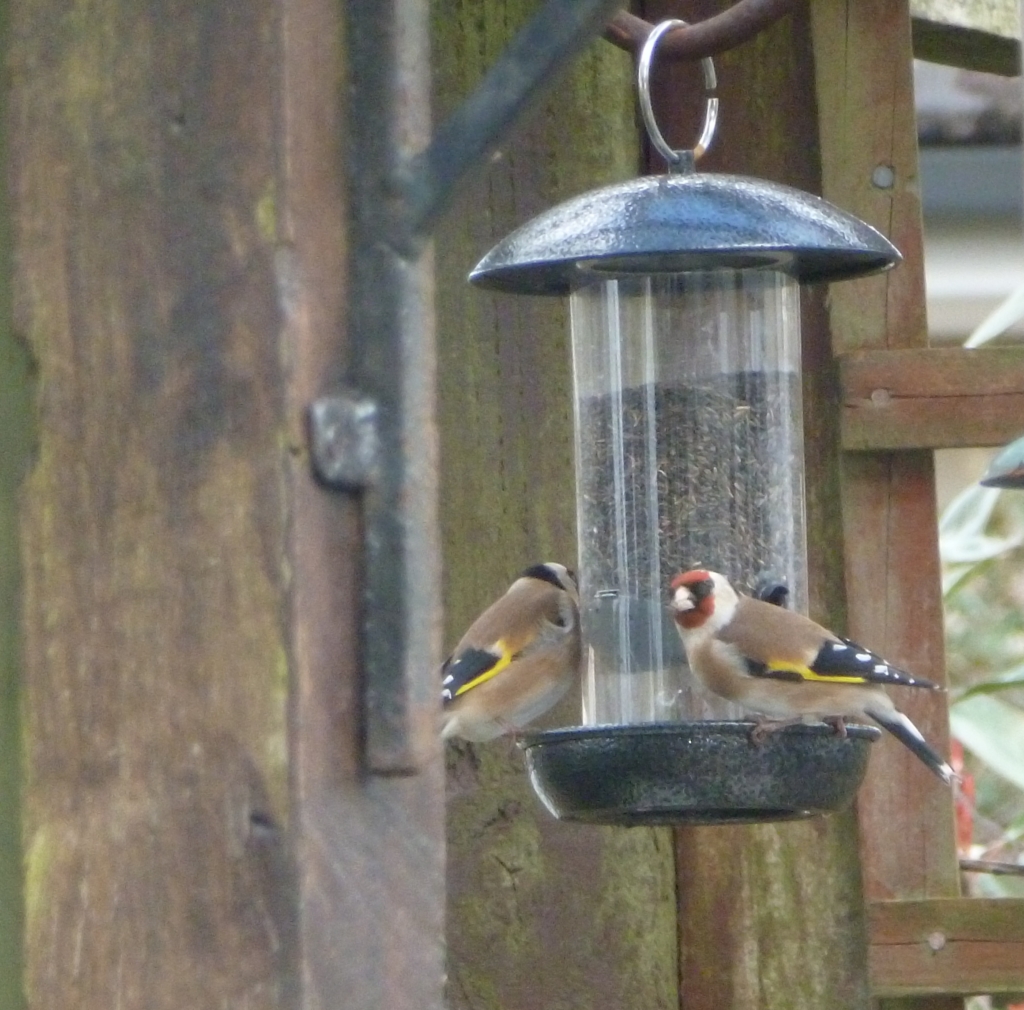It’s been such a mild winter that our feathered friends haven’t been very busy on bird feeders in the garden. Nevertheless, we’d love to know what you’ve spotted. Anything unusual – this last week in particular perhaps? The combination of spring migration and colder, wetter weather always increases the likelihood of something exciting dropping by. And what about their table manners?
Sometimes it seems that the question of what comes to feeders involves birds learning from others how to use them. Have you noticed how sparrows may start off only picking up seeds from the ground, but become more adventurous and eventually follow the lead of blue tits and great tits? In Britain, long-tailed tits (elegant little birds, with a pinkish tinge) seem to have acquired the habit of using bird feeders in the south first, and it has spread northwards. We would be interested to know if anyone has seen any of these on their feeder in the PO. And the jaunty crested tit, which in Britain is so rare and almost never seen at seeds or nuts, is quite common here and tends to visit feeders frequently.
Here and in the winter edition of PO Life, we talked about rascally nuthatches raiding feeders and making a huge mess. But the other day we heard that they are saints compared with siskins. Despite being no bigger than a sparrow, siskins appear to be the bullies of the bird table – and that’s just the girls! Females are pale greenish on the back, with black streaks on a white underside. Males are much brighter, with a black cap and chin. Both sexes have a distinctive yellow flash on the wing, and a yellow rump visible in flight.
Here are two of the more genteel – but bouncy – goldfinches. So pretty close up.



Our house is in Ceret, 200 m. above sealevel, inhabitants in the house are finns. I have spotted all those species you listed. I can add some more: coal tit, marsh tit, grested tit, short toed tree creeper, chaffinch and the day before yesresday a brilliant male brambling, continuing: cirl bunting, rock bunting, tree sparrow among house s.,hedge sparrow, collared turtle dows, black redstart and a pair of blackcups who are surprisingly mean ! Magpies and jays visit also daily. Our location is rather close to mountin slopes and forests. This is a good start ?
Tapani Rahkola Ceret
“A good start”?! I should say so. That’s an impressive list and wonderful to hear. You’re obviously in a great location. I’m especially envious of the rock bunting (never seen one of those – I think we’re right on the edge of their territory, so must look out for them) and also the brambling. According to my book, bramblings are only here in the winter, so perhaps it’s either on the move or late departing? And good to know we can add blackcap to our list of bad boys. Thanks for this – very interesting. Lesley